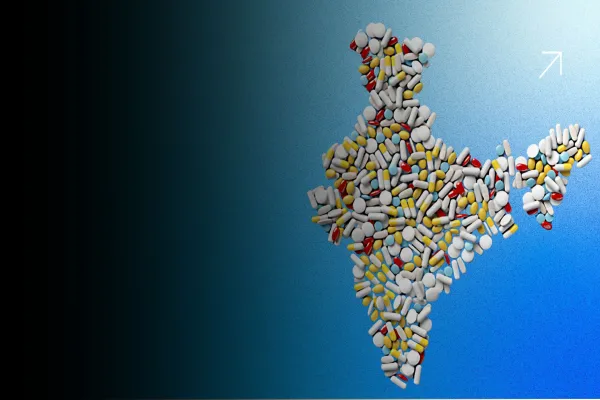Start with clear definitions
Patient Engagement is the ongoing, two-way communication that helps people understand their condition, make informed decisions, and stay connected to their care. Patient activation is different: it’s the level of knowledge, skill, and confidence people have to manage their health on a day-to-day basis; the thing instruments like the Patient Activation Measure (PAM) quantify. Activation typically progresses in stages and, when it rises, outcomes improve and avoidable utilisation falls. Treat Patient Engagement as the engine and activation as the output you’re paid for.
Make patient activation a measurable objective
If you can’t measure it, you won’t improve it. Where PAM isn’t available, use proxies any commercial team understands: time‑to‑first‑fill, on‑time refills, persistence at 3/6/12 months, and completion of onboarding tasks. Track by therapy and region. Your review cadence should be monthly, not quarterly. Patient Engagement only matters if it moves people from passive to proactive.
Design a journey that doesn’t reset every quarter
Patients don’t live in campaigns. Map one continuous journey from diagnosis to sustained self‑management with clear checkpoints for education, onboarding, titration, relapse prevention, and lifestyle support. Connect that journey to your CRM so every interaction, whether clinic, call centre, WhatsApp, or portal, has context and an audit trail. In practice, this means wiring journey logic to your commercial CRM and regulated content libraries so nothing leaves the system without approvals and traceability. Patient Engagement wins when journeys are continuous, not episodic.
Go vernacular and mobile‑first
Activation stalls when content doesn’t fit people’s lives. Build low‑bandwidth PWAs, WhatsApp flows, and short explainers in regional languages. This isn’t theory. Indian programmes are already using WhatsApp chatbots to push prescriptions, diagnostic reports, reminders, and health updates at scale. Telemedicine expansions are training patients to complete follow‑ups digitally. Make actions dead simple: set a reminder, log a dose, ask a question, book a visit. Meet people where they already are.
Close the field-digital loop
Reps, nurses, educators, and your digital channels should speak with one voice. Give field teams the ability to trigger pre‑approved sequences right from their detailing or CRM screens so patients get the same message, the same day, in the same tone, and feed replies back to the rep and the brand dashboard. Field data shows that when channels are coordinated, reach and interaction quality improve. Build your stack so coordination is the default, not a miracle.
Bake compliance into the workflow
Compliance is non‑negotiable in pharma marketing. Put medical-legal-regulatory review, consent capture, audit trails, and expiry controls inside the same systems that push content. Lock templates, localise safely, and log every outbound message. Under UCPMP 2024, transparency and ethics aren’t slogans; they’re table stakes. If compliance slows you down, your process is wrong. Done right, it’s invisible and absolute.
Personalise with approved modules, not one‑offs
Personalisation only scales if it’s structured. Build a library of pre‑approved blocks, including indications, precautions, device how‑tos, and FAQs, that can be assembled per profile without fresh approvals. Use CRM/CDP data to decide language, format, and cadence. The goal is fewer review cycles and higher relevance. That’s how Patient Engagement becomes targeted without turning into a compliance nightmare.
Measure what moves behaviour
Clicks are vanity. Track behaviours that signal activation: streaks in symptom logging, successful device demos, questions submitted to care teams, attendance at follow‑ups, and refill timing. Attribute those behaviours back to the touchpoints that drove them so budget flows to what works. Patient Engagement earns boardroom credibility when you can show behaviour change, not just open rates.
Build feedback loops after every clinical touch
Don’t wait for the next appointment to fix small problems. Post‑visit micro‑surveys and check‑ins surface barriers early, such as cost, side effects, and confusion. Route issues within 24 hours to a nurse callback, pharmacist counselling, or physician consult. Close the loop, then share de‑identified patterns with medical and brand teams monthly. Preventing drop‑off is the cleanest ROI story you can tell.
Prove it with a 90‑day pilot, then scale
Pick one therapy, three regions, two channels. Instrument everything. Define success on activation proxies and adherence, not pageviews. If thresholds are hit, scale; if not, fix content, cadence, or channel and rerun. Protect budgets, respect UCPMP, and build internal belief with evidence, not decks.
What this demands from your stack
You don’t need “more tools.” You need a CRM that talks to your messaging rails, an approval engine inside content creation, a CDP that unifies patient and HCP signals, and dashboards that link engagement to adherence and refills. You also need teams trained to trigger digital flows rather than fight them. This is execution work. Patient Engagement fails when tech is a patchwork and success is left to luck.
Why this matters now
Indian pharma is rewriting the playbook. Patients expect digital clarity. Regulators expect discipline. Brands expect proof. The companies that treat Patient Engagement as a boardroom issue, not a side project, will outpace the market. They’re done with fluff. They need execution.
If you’re ready to move from good intentions to measurable patient activation, start by auditing your current engagement journey against these ten steps. The execution gap is where most programmes fail, and where the right partner can make all the difference.





